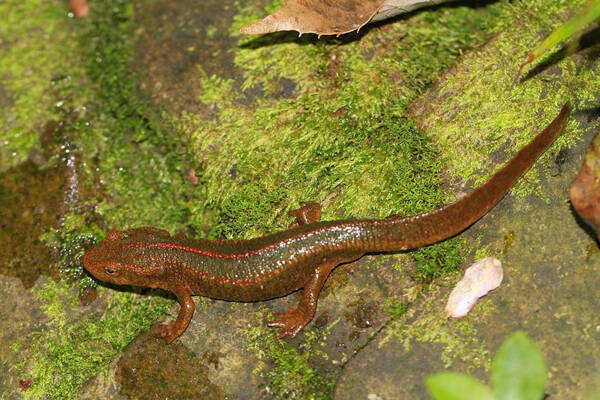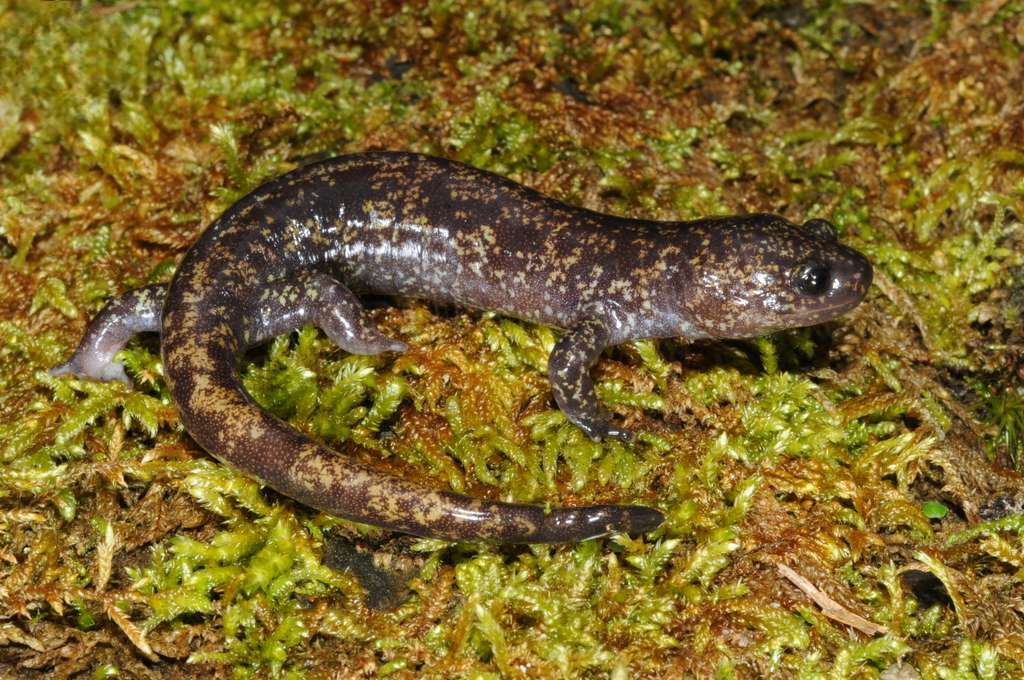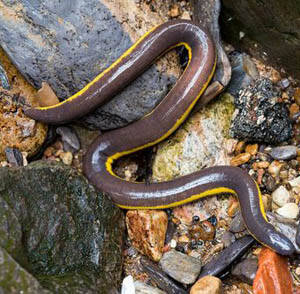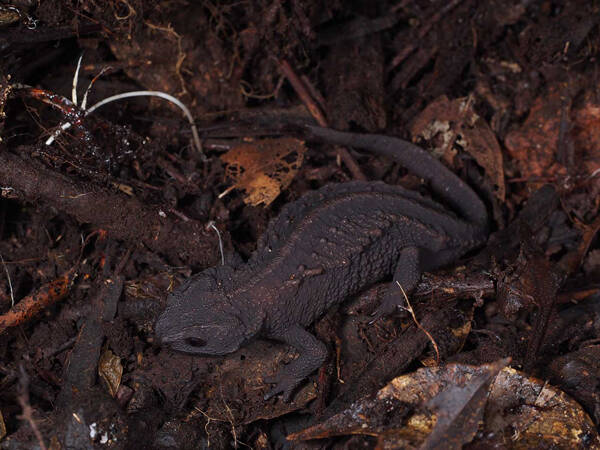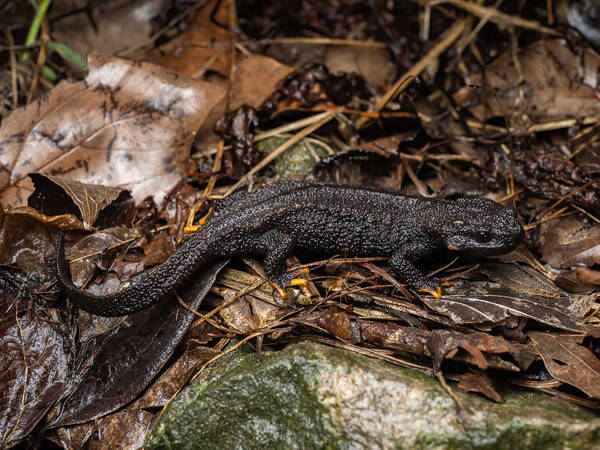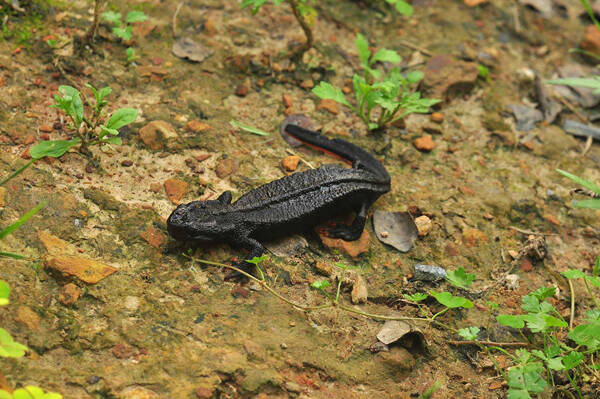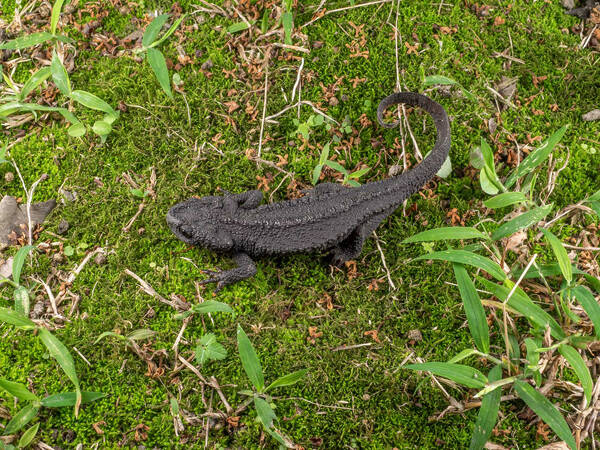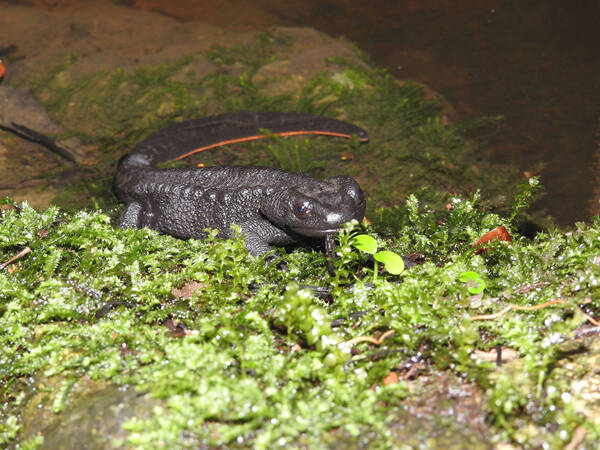Paramesotriton caudopunctatus
IUCN
LCBasic Information
Scientific classification
- name:Paramesotriton caudopunctatus
- Scientific Name:Paramesotriton caudopunctatus,Spot-tailed Warty Newt
- Outline:Urodela
- Family:Caudata Salamandridae Salamander
Vital signs
- length:About 14 cm
- Weight:
- lifetime:
Feature
The whole body is covered with small moles, the head, trunk and backs of the limbs are khaki, and the rest of the body is olive green.
Distribution and Habitat
Endemic to China, distributed in Guizhou (Leishan), Hunan (Daoxian, Jiangyong), Guangxi (Fuchuan).
Lives in mountain streams and backwaters of small rivers at an altitude of 800-1800m.
Appearance
The head is slightly flat, narrow in front and wide in the back; the snout is significantly longer than the eye diameter; the trunk is cylindrical. The base of the tail is strong and gradually flattened backwards; the caudal fin fold is thin and straight, with a rounded tip. The skin is relatively rough, with glandular ridges on the sides of the head; the squamous part of the frontal scale arch is the same thickness as the frontal part; there are 3 dense longitudinal strokes in the center and both sides of the back, without costal grooves; the neck fold is obvious. There are 3 orange-yellow longitudinal bands on the back of the body.
Details
The tailed newt is a tailed amphibian belonging to the Salamandridae family and the genus Salamander. It lives in backwaters, small streams and large rivers at an altitude of 800 to 1,800 meters. It is sometimes also found in quiet waters beside streams. The tailed newt, which is produced in Yueliangba, Jiangkou County, Guizhou, lives in a stream with steep slopes and fast currents. The bottom is all smooth stone slabs and large and small stones. There are trees and shrubs on both sides of the river. There are no residents within dozens of miles around, the vegetation is dense, and the environment is humid. Adults are mostly scattered and crawling on smooth stone beaches underwater at different depths or under rotten branches and leaves by the water.
Female newts lay 63 to 72 single eggs, which are attached to the cracks of rocks in sheets. The breeding behavior of the newt was observed under captive conditions, and it was found that the courtship behavior of the newt is similar to that of the species of the genus Salamander, that is, the male newt induces the female newt by flapping its tail. Once the female newt responds, the male newt turns 180 degrees and crawls forward, with its tail moving in a wave-like motion. The female newt follows closely behind, often touching the male newt's tail with its snout. At this time, the male newt raises and stretches its tail, with only the tail end bent to reveal the bright spots at the end of the tail. At the same time, the cloaca is opened to produce a sheet of sperm mass, one end of which is attached to the bottom of the water, which is about 5 mm long. Then, the female newt moves forward, and its cloaca sticks to the sperm mass and takes it into the cloaca. The female newt lays eggs in stone caves or caves in the water, and the single egg adheres to the stone, and the egg group is mostly in the form of sheets.
The number of harmful animals swallowed by the tail-spotted newt is 2.3 times that of beneficial animals, and the number is 2.8 times, and its beneficial coefficient is 43.85%. It can be seen that this newt is an animal that is beneficial to agriculture and forestry.
It has been included in the "List of Terrestrial Wildlife with Important Economic and Scientific Research Value under State Protection" promulgated by the State Forestry Administration of China in 2000. That is, the list of China's "Three-Have" protected animals.
It is included in the second level of the "List of National Key Protected Wildlife in China".
